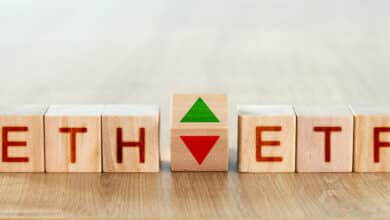SEC Halts Ether Investigation While Iran Launches Digital Rial Pilot

Key Insights:
- SEC halts investigation, suggesting Ether is now viewed as a commodity, reshaping its regulatory landscape.
- Iran tests digital rials for Kish Island payments, integrating CBDC into everyday transactions.
- Uphold delists six stablecoins to comply with new EU MiCA regulations, impacting European crypto users.
As of June 19, the United States Securities and Exchange Commission (SEC) has reportedly ceased investigating whether Ether (ETH) qualifies as a security. According to a letter from Consensys, the SEC’s approval of spot Ether exchange-traded funds (ETFs) suggested an updated stance classifying Ether as a commodity. Some saw this development as a confirmation of Ether’s status as a non-security, potentially influenced by regulatory pressures and recent approvals related to Ether ETFs.
Laura Brookover, a lawyer from Consensys, commented that there would be “no more protestations from the SEC that Ether is a security.” She attributed this to the SEC’s decision to lift subpoenas on Consensys, correlating with their ETF rule changes that treat Ether as a commodity.
Contested Interpretations of the SEC’s Actions
Despite Consensys’ letter’s implications, the SEC has not officially verified this interpretation. An SEC spokesperson refrained from commenting on the matter, stating that the commission does not confirm the existence or nonexistence of investigations. This lack of direct confirmation leaves room for interpretation and speculation within the cryptocurrency community and regulatory observers.
Carol Goforth, a law professor at the University of Arkansas specializing in business associations and securities regulation, argues that approving a spot Ether ETF does not necessarily mean Ether is a commodity. She points out that ETFs are already based on commodities, suggesting that the approval alone does not suffice to define Ether’s classification definitively.
In another significant development in the digital currency landscape, the Central Bank of Iran (CBI) has initiated a pilot for its national digital currency (CBDC), targeting domestic micropayments. The pilot, which commenced on June 21, allows banking customers and tourists on the island of Kish to use the digital rial for transactions.
Kish, an island in the Persian Gulf, is a major tourist hub and operates as one of Iran’s free trade zones. This setting provides a unique environment for testing the digital rial, facilitating transactions through a barcode scanning system. This pilot introduces an alternative payment method alongside traditional cash and bank cards, potentially paving the way for broader adoption of the digital rial within Iran.
Uphold Delists Stablecoins in Europe
Uphold, a cryptocurrency exchange, has notified its European users that it will end support for six stablecoins, including Tether, Frax Protocol (FRAX), Gemini dollar (GUSD), Pax dollar (USDP), and TrueUSD (TUSD), starting from July 1. This decision aligns with the European Union’s Markets in Crypto-Assets Regulation (MiCA).
Users holding these stablecoins must convert them to other cryptocurrencies by June 28, after which Uphold will automatically convert any remaining balances into USD Coin. MiCA, effective June 30, imposes stricter regulatory requirements on fiat-backed stablecoins and e-money tokens that have surpassed specified adoption thresholds.
Moreover, these regulations mandate that fiat-backed stablecoins maintain a 1:1 ratio of liquid reserves and that issuers establish and sustain a reserve of assets held in custody by a third party, segregated from other assets. Additionally, algorithmic stablecoins are outright banned under these new rules.
Italy Increases Crypto Market Surveillance
Italy is set to enhance its oversight of cryptocurrency markets in compliance with the MiCA regulatory framework. The new regulations aim to prevent insider trading and market manipulation, and fines based on the severity of the violations range from 5,000 to 5 million euros.
The MiCA framework compels blockchain firms to navigate challenging regulatory landscapes. Decentralized finance (DeFi) protocols face tough choices between full decentralization and adherence to Anti-Money Laundering (AML) and Know-Your-Customer (KYC) regulations. This increased surveillance marks a significant step in Italy’s approach to regulating the rapidly evolving digital asset market.
Editorial credit: Rcc_Btn / Shutterstock.com
Tokenhell produces content exposure for over 5,000 crypto companies and you can be one of them too! Contact at info@tokenhell.com if you have any questions. Cryptocurrencies are highly volatile, conduct your own research before making any investment decisions. Some of the posts on this website are guest posts or paid posts that are not written by Tokenhell authors (namely Crypto Cable , Sponsored Articles and Press Release content) and the views expressed in these types of posts do not reflect the views of this website. Tokenhell is not responsible for the content, accuracy, quality, advertising, products or any other content or banners (ad space) posted on the site. Read full terms and conditions / disclaimer.







